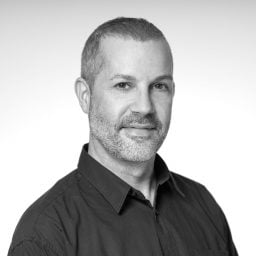Auctions
François Meyer Photographed Iconic Artists and Scooped Up Their Work, Too. Now, His Storied Collection Heads to Sotheby’s
Sotheby’s Paris will hold a dedicated auction of Meyer’s art collection on September 26.
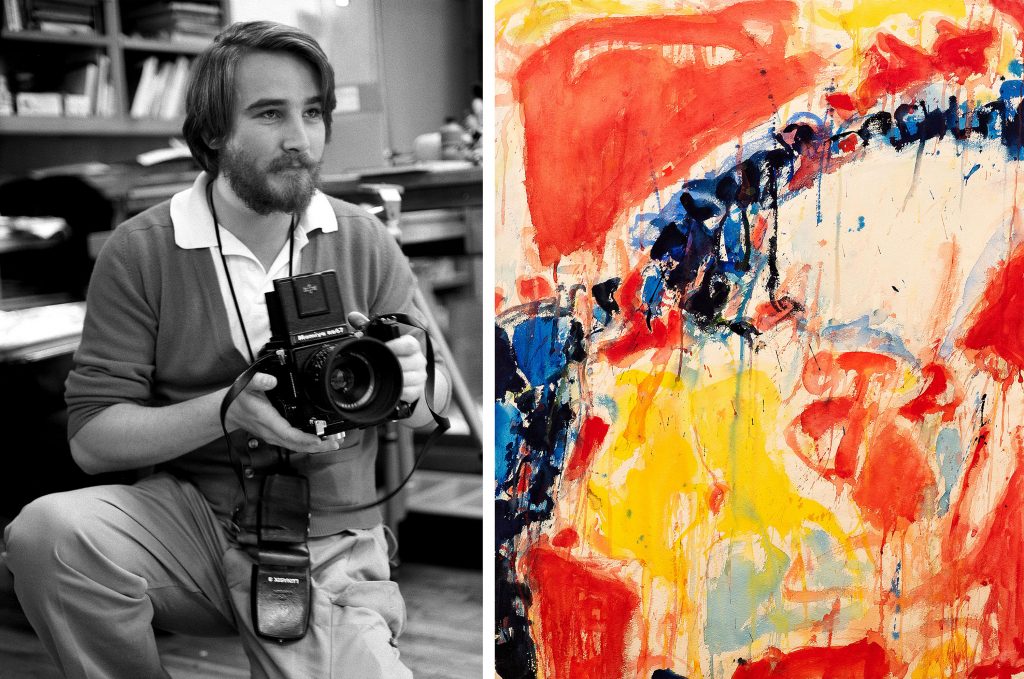
Not only did Swiss photographer François Meyer immortalize artists Roy Lichtenstein, Andy Warhol, David Hockney, Sonia Delaunay, Helen Frankenthaler, Sam Francis, and Francesco Clemente, to name just a few, he was an admirer and collector of their work, too.
Now, Sotheby’s Paris will hold a dedicated auction of Meyer’s personal art collection—160 works, comprising most of his estate—on September 26, with a public exhibition in the house’s galleries from September 22–25. Lots include a mix of Modern and contemporary works by Pablo Picasso, Alexander Calder, Victor Brauner, Maria Helena Vieira da Silva, Raymond Pettibon, Christo, Le Corbusier, and Stanley Whitney. In December 2023, 50 additional pieces will be offered in Sotheby’s Swiss Art auction to commemorate Meyer’s birthplace of Geneva.
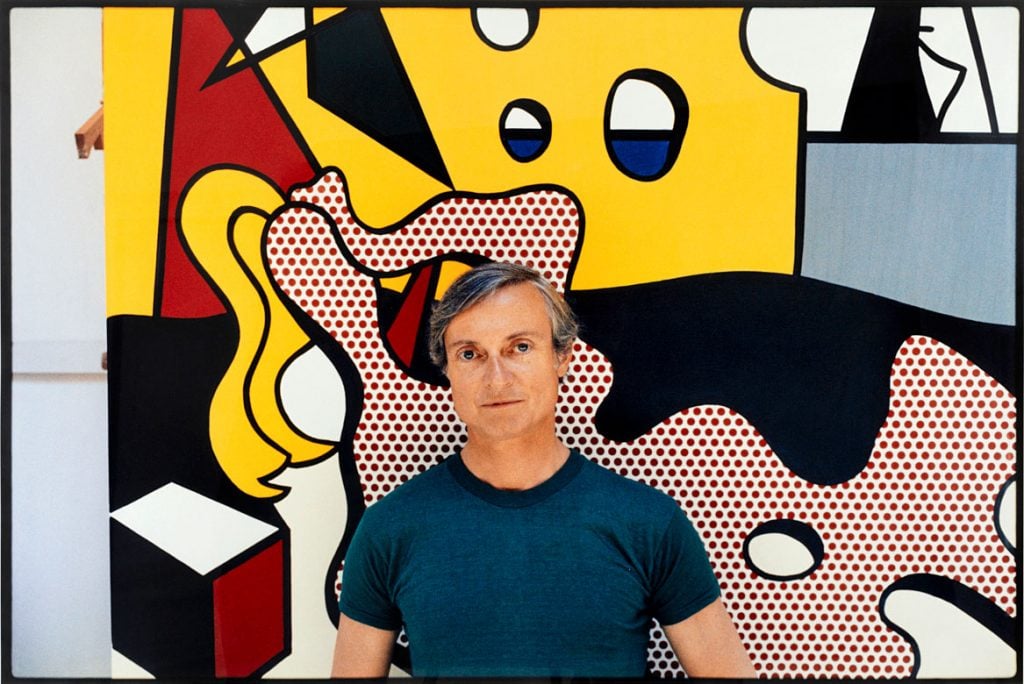
Roy Lichtenstein photographed by François Meyer. Photo: Julien Gremaud. Courtesy of Sotheby’s.

David Hockey photographed by François Meyer. Photo: Julien Gremaud. Courtesy of Sotheby’s.
Sotheby’s Switzerland chairman Caroline Lang, having known Meyer for over three decades, isn’t short of a fond memory. “François welcomed me into his magical and unique way of looking at art,” she told Artnet News. “He and I struck up not only a warm working relationship, but also a deep friendship which lasted until his too-early death in 2021.”
“François Meyer first telephoned Sotheby’s Geneva in 1993,” Lang reminisced. “His phone call was, luckily, transferred to me. I heard his beautiful smile down the line when I answered, and, unlike many clients faced with an unknown young person new in their role, he immediately took me under his wing and suggested to meet over filets de perches in the Beau-Rivage in Lausanne, before going to see the works he was considering selling at auction.”
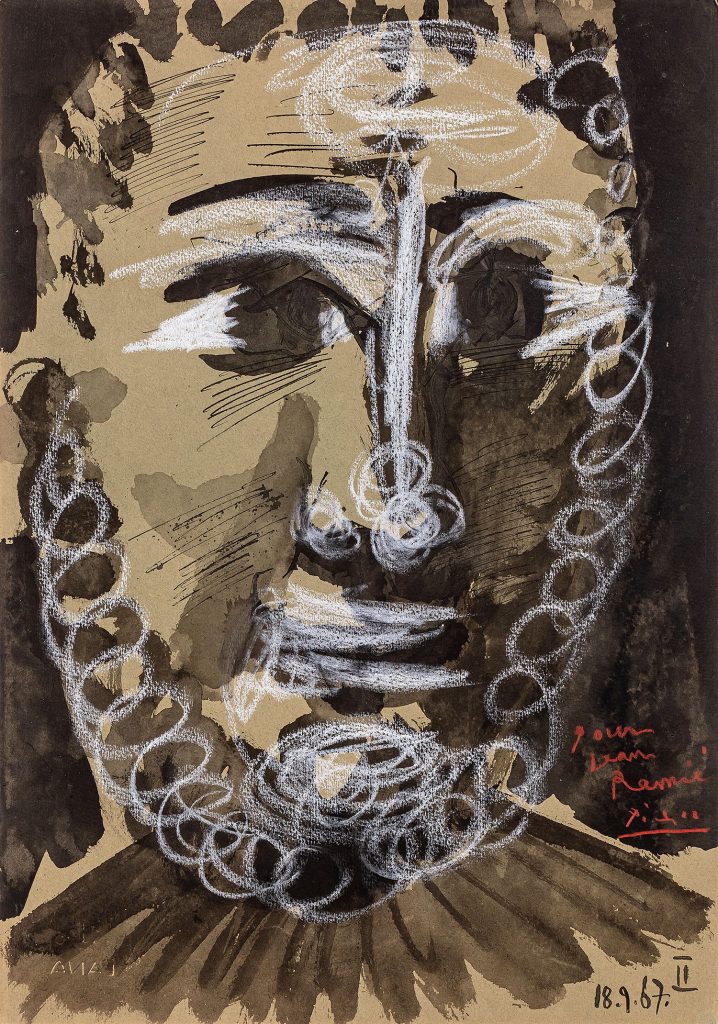
Pablo Picasso, Tête de Jeune Homme barbu (1967). Estimate: $381,000–$490,000. Courtesy of Sotheby’s.
“In 2000,” she continued, “I suggested that we hold an exhibition dedicated to François’s photographs of artists titled the ‘Artist’s Eye’… Shortly after, he took me to the manoir in Gland where he had grown up and introduced me to his father’s amazing collection of Modern and contemporary paintings. His father, Eric, had been an astute businessman and a great collector across many different areas of interest, from knives to precious stones and great works of contemporary art.”
Eric Meyer started collecting when François was six years old, acquiring artworks by Niki de Saint Phalle, César, and Robert Rauschenberg, among many other artists at their professional peak. In 2010, Sotheby’s sold the estate of the elder Meyer and fetched prices far above their estimates. According to Artnet’s Price Database, Rauschenberg’s Exile (1962) sold for more than $8 million (including buyer’s premium).
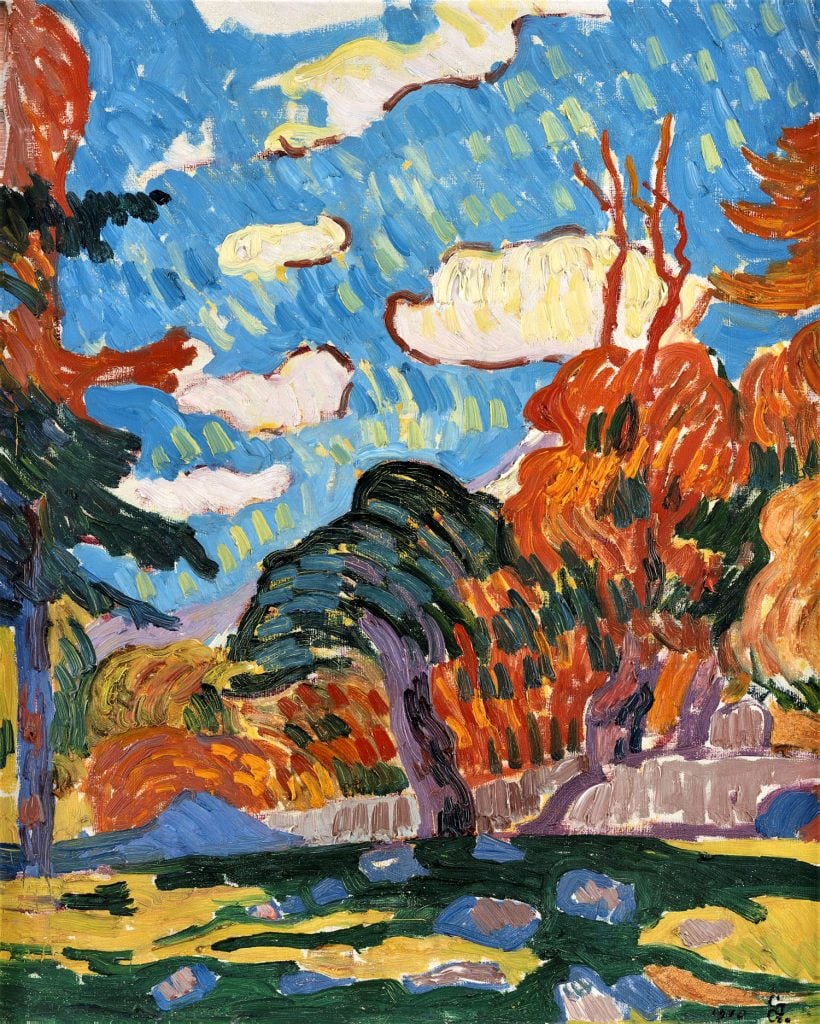
Giovanni Giacometti, Sommer im Wald (1910). Estimate: $341,000–$569,000. Courtesy of Sotheby’s.
Among the highlights in the upcoming sale is Giovanni Giacometti’s Sommer im Wald (1910), with an estimate of €314,000–€523,000 ($341,000–$569,000). Meyer was “particularly proud” of it, said Lang. “He would occasionally send his works to exhibitions, and this one is a good example—it was part of ‘The Giacometti: A family of creators’ exhibition in Fondation Maeght and the ‘Modernités Suisses‘ exhibition at Musée d’Orsay in Paris.”
Another marquee lot is Sonia Delaunay’s Projet pour vitraux. In 1967, the artist designed a series of abstract stained glass windows—commissioned by architect and designer Jean Prouvé for the church of Saint-Pierre-de-Chaillot in Paris—yet they were never realized. The work that Meyer acquired is a preliminary sketch, estimated to bring €200,000–€300,000 ($218,000–$326,000).

Sonia Delaunay, Projet pour vitraux (1967). Estimate: $218,000–$300,000. Courtesy of Sotheby’s.
According to Sotheby’s, Meyer began his photography career in Switzerland, at a school named after a pioneer of the form, Frédéric Boissonnas. It was there that Meyer developed a passion for portraiture and made his first foray into collecting, at the age of 18, with the purchase of an Henri Cartier-Bresson photograph.
Later, aged 21, Meyer moved to New York City, where he befriended gallerist Leo Castelli and spent time in Warhol’s Factory. Through these connections and his natural affability, many of the artists Meyer rubbed shoulders with became not only willing subjects but lifelong friends. For the remainder of his life, he traveled to artist’s studios to photograph them, according to Lang, who said, “One of his favorite hideaways was the family estate in Michigan. On the way back, he would travel via New York to visit art galleries and artists and buy some wonderful trouvailles. His meetings with the artists…were almost more important than the art itself.”
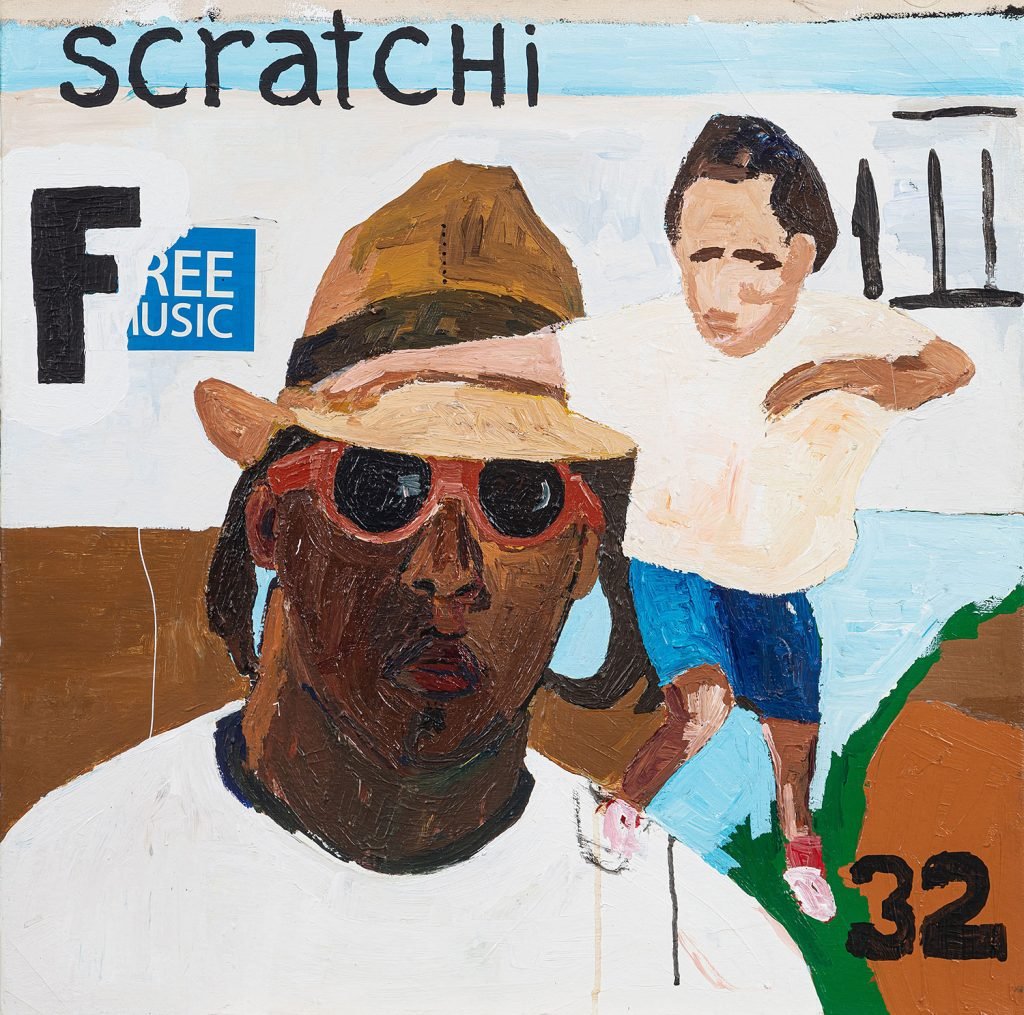
Henry Taylor, Scratchi (2005). Estimate: $87,000–$131,000. Courtesy of Sotheby’s.
“François’s curiosity led him to collect in different collecting categories, ranging from kachina dolls from the Arizona Hopi people to contemporary, Modern, Swiss, and outsider art.” Meyer once told Lang about the outsider artists who had gathered at the Gugging, a mental institution near Vienna, and arranged for her to meet August Walla, an artist residing there. “Walla greeted me in his spacious dwelling,” Lang recalled, “entirely covered from ceiling to floor with his paintings on a black background. This was the first time I encountered horror vacui and doodling. And I realized art therapy was not just confined to the rehabilitation of the Gugging’s patients—we all benefit from the therapeutic value of art.”
“[Meyer] never lost his sense of wonder, always seeing artworks as if for the first time,” Lang concluded. “It was a delight to witness his process of discovery, as he connected with new artists and artworks, always with an open and curious mind. Through his encounters and travels, he made it his mission to immortalize the greatest artists of his time.”

